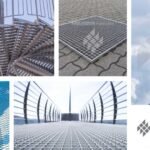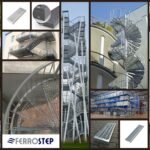The intersection of technology and art has sparked a revolution in the creative landscape, redefining how artists express themselves and engage with audiences.
With the rise of digital tools and platforms, artists now have unprecedented opportunities to experiment with new mediums, techniques, and forms of expression. Technology has not only democratized the creative process but has also enabled artists to reach global audiences instantaneously, transcending geographical boundaries and traditional constraints.
Furthermore, the fusion of technology and art has given rise to innovative collaborations and interdisciplinary approaches that push the boundaries of artistic creation. Through the integration of artificial intelligence, virtual reality, and augmented reality, artists are exploring new realms of creativity and pushing the limits of what is possible in the art world. This fusion of technology and art has paved the way for groundbreaking works that challenge conventions, inspire imagination, and redefine the very essence of artistic expression.
Evolution of Digital Innovation in the Creative Industry
Digital innovation has significantly transformed the landscape of the creative industry in recent years. Artists and creators now have access to a wide array of digital tools and technologies that have revolutionized the way they produce and showcase their work. From digital painting software to virtual reality platforms, the possibilities for artistic expression are virtually endless in this digital age.
The evolution of digital innovation has not only impacted the creative process but has also revolutionized the way artists connect with their audience. Through social media platforms and online galleries, artists can now showcase their work to a global audience with just a few clicks. This increased accessibility has opened up new opportunities for artists to gain recognition and expand their reach beyond traditional boundaries.
Impact of Technology on Traditional Art Forms
Technology has undeniably revolutionized traditional art forms, challenging artists to adapt and incorporate digital tools into their creative processes. The accessibility of digital software and tools has brought about a shift in how artists conceptualize and execute their work. Traditional art mediums such as painting and sculpture have been reimagined through the use of digital platforms, allowing for greater experimentation and flexibility in artistic expression.
Furthermore, technology has transformed how traditional art forms are showcased and shared with audiences worldwide. Online galleries and social media platforms have provided artists with a global platform to exhibit their work and connect with a wider audience. This digital exposure has not only democratized the art world but has also opened up new avenues for collaboration and inspiration among artists from diverse backgrounds.
Role of Artificial Intelligence in Art Creation
Artificial Intelligence (AI) has rapidly transformed the landscape of art creation by revolutionizing the way artists conceptualize and produce their work. Through advanced algorithms and deep learning capabilities, AI has enabled artists to explore new realms of creativity and innovation. AI algorithms can analyze vast amounts of data to generate unique patterns, styles, and designs that challenge traditional artistic boundaries.
Moreover, AI algorithms have the potential to collaborate with human artists, providing them with new tools and techniques to enhance their creative process. By leveraging AI, artists can experiment with unconventional ideas, generate new perspectives, and push the boundaries of their artistic expression. This fusion of human creativity and technological advancement is redefining the art world and opening up a realm of endless possibilities for artists to explore.
Virtual Reality and Augmented Reality in the Art World
Virtual Reality (VR) and Augmented Reality (AR) have transformed the art world by offering immersive experiences that blur the lines between the physical and virtual realms. Artists can now create interactive installations that engage viewers in new ways, breaking free from the constraints of traditional art forms. VR allows users to step into a digital environment and experience art in a completely unique and personalized manner, while AR enhances the real world with digital overlays, merging art with everyday life.
These technologies have opened up endless possibilities for artists to push boundaries and experiment with new forms of storytelling and expression. From interactive exhibitions to virtual galleries, VR and AR have revolutionized how art is consumed and interpreted. As these tools become more accessible and advanced, artists are embracing the potential of VR and AR to amplify their creativity and reach a global audience in unprecedented ways.

Digital Platforms for Artists to Showcase Their Work
In the modern digital age, artists have an array of platforms at their disposal to showcase their work to a global audience. These platforms serve as virtual galleries, enabling artists to exhibit their creations without the constraints of physical space or geographical limitations. With just a few clicks, artists can reach art enthusiasts, collectors, and potential buyers from around the world, allowing for unprecedented visibility and exposure.
Digital platforms also provide artists with valuable tools and resources to manage their portfolios, communicate with their audience, and market their work effectively. From social media sites tailored for visual content to dedicated art marketplaces and online galleries, artists can leverage these platforms to build their brand, connect with like-minded creatives, and explore new opportunities for collaboration and growth. Through these digital channels, artists can engage with a diverse and dynamic online community, fostering a vibrant ecosystem that celebrates creativity and innovation.
Challenges and Opportunities in the Digital Creative Sphere
Navigating the digital creative sphere presents a myriad of challenges for artists and creators. One major hurdle is the oversaturation of content online, making it difficult for individual works to stand out and gain exposure. Additionally, the rapid evolution of technology requires continuous adaptation to new tools and platforms, posing a challenge for artists to stay relevant and competitive in the digital landscape. Despite these obstacles, the digital realm also offers immense opportunities for artists to reach a global audience and connect with like-minded individuals across the world.
One of the key opportunities in the digital creative sphere is the democratization of art, allowing artists of all backgrounds to showcase their work and gain recognition. Digital platforms provide a level playing field for emerging artists to share their creations without the constraints of traditional gatekeepers in the art world. Furthermore, the interconnectivity of the digital space enables collaboration with other artists, regardless of geographical boundaries, fostering a sense of community and collective creativity among creators. Embracing the digital landscape opens up new avenues for artistic expression and innovation, offering endless possibilities for growth and exploration in the creative field.
Collaborations between Technological and Artistic Communities
Technological advancements have opened up new horizons for artistic expression, leading to an exciting era of collaboration between technology experts and creative individuals. These collaborations have sparked innovative projects that blend the realms of art and technology, pushing boundaries and redefining traditional artistic practices. By working hand in hand, technological and artistic communities have been able to harness the power of cutting-edge tools and techniques to create immersive and interactive experiences that captivate audiences worldwide.
The fusion of technology and art has paved the way for interdisciplinary approaches that break free from conventional norms, giving rise to unprecedented opportunities for experimentation and creativity. Through these collaborations, artists are empowered to explore new mediums, techniques, and possibilities that were once out of reach. By bridging the gap between technology and art, these partnerships are shaping the future of the creative industry and shaping a landscape where innovation knows no bounds.
Future Trends in Digital Innovation for Artists
Digital innovation continues to revolutionize the way artists create and share their work. One of the future trends on the horizon is the integration of blockchain technology in the art world. By using blockchain, artists can securely prove the authenticity and ownership of their digital creations, which can help combat issues such as copyright infringement and art forgery. This technology also enables artists to receive direct payments from collectors, eliminating the need for intermediaries and ensuring a fairer distribution of profits.
Another exciting trend in digital innovation for artists is the rise of machine learning algorithms that can assist in the creative process. Artists can leverage these algorithms to generate new ideas, provide suggestions for color schemes or compositions, and even create art pieces autonomously. This fusion of human creativity with artificial intelligence opens up a realm of possibilities for artists to explore new styles and techniques and push the boundaries of traditional art forms.
Empowering Creativity through Technology
In today’s rapidly evolving digital landscape, technology plays a pivotal role in empowering creativity among artists. The integration of advanced tools and software has revolutionized the way art is created, allowing individuals to explore new realms of expression and innovation. By harnessing the power of technology, artists can transcend traditional boundaries and unleash their imagination in ways previously unimaginable.
From digital painting to 3D modeling, technology offers a diverse range of mediums for artists to experiment and push the boundaries of their craft. With access to online platforms and communities, creatives can collaborate, share ideas, and gain inspiration from a global network of like-minded individuals. Technology not only streamlines the creative process but also provides a platform for artists to showcase their work to a wider audience, enabling them to connect with art enthusiasts and potential clients on a global scale.




